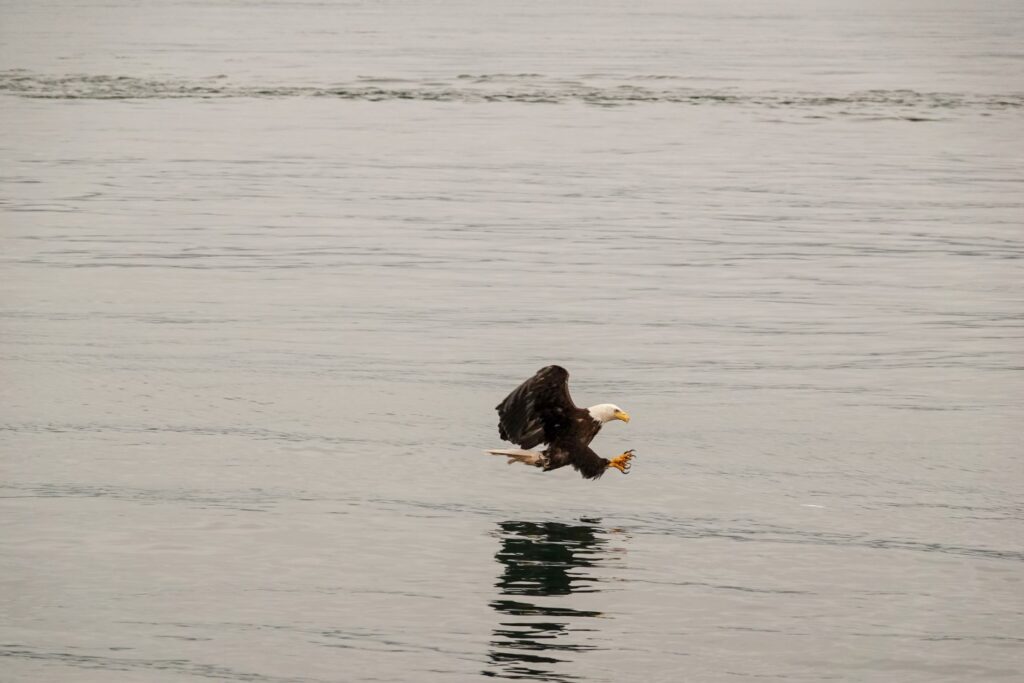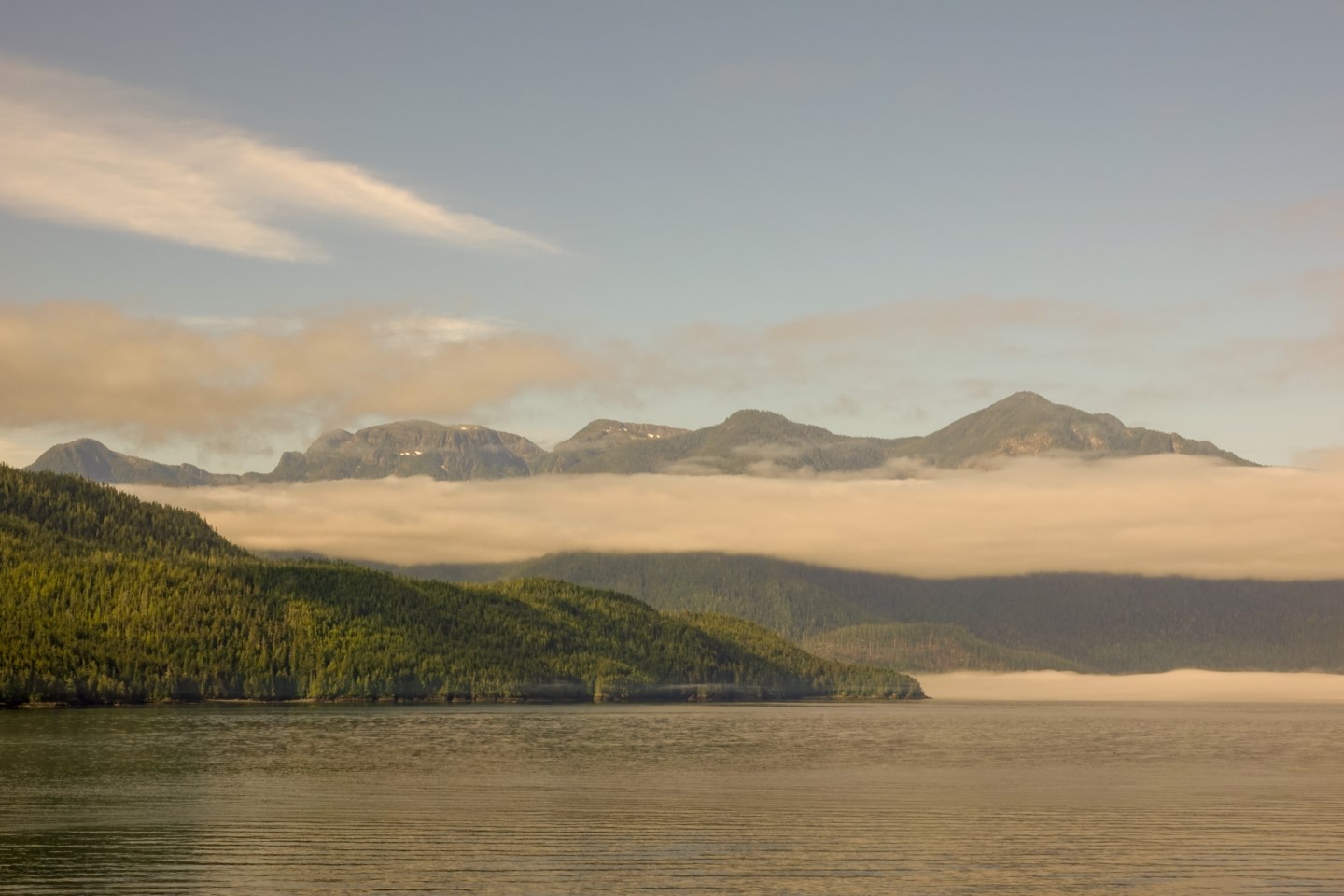On a bright sunny Wednesday Sam drove us to Vancouver from where our Alaskan Inside Passage cruise was to depart the following day. We stayed at an old favourite in downtown Vancouver, the Sunset Inn and found a great French themed restaurant just around the corner for dinner.
Boarding the following day was from 2pm but we strolled down to the dock after breakfast to view our ship which had arrived that morning and to familiarise ourselves with the procedure for the afternoon. Canada Place was bustling with tourists enjoying the beautiful weather and we were excited to see the Silver Shadow preparing for departure.
Saying our goodbyes to Sam at lunchtime we joined our fellow cruisers, clutching various documentation – proof of Covid vaccinations, negative Covid tests etc. etc. – and within a relatively short period of time we were on the pool deck, bubbles in hand and waving goodbye to those less fortunate 😉
At 4pm an announcement was made that our cabins were ready and we spent some time unpacking, admiring the scenery from our verandah and checking out the ship and its offerings.
The Inside Passage officially begins at Olympia, south of Seattle and stretches northward to the Alaskan towns of Haines and Skagway encompassing thousands of islands and many tiny coastal communities en route, most of which are only accessible by sea or air making cruise ships a very popular way of seeing this part of the world.
Our first day was spent navigating occasionally very narrow channels surrounded by towering green mountains shrouded in trails of mist and punctuated by many silver waterfalls. The weather, whilst not warm enough for us to brave the ship’s pool, provided an other worldly backdrop to the scenery and often other watercraft suddenly came into view on the horizon.



The view from the balcony was ever changing and occasionally we were accompanied by local wildlife as well.
The first port that we docked at was Ketchikan – known for its salmon, scenery and a rich native Alaskan heritage. It is often referred to as Alaska’s first city due to its position at the southern tip of the Alaskan portion of the Inside Passage and is named after Ketchikan Creek which flows through the town and was a summer fish camp for the native Tlingit people.
Of the many shore excursions offered here we had chosen one that came highly recommended, the Bering Sea crab fisherman’s tour. For those of you that have ever watched “Deadliest Catch” the Aleutian Ballad featured in season 2 and has now been modified to allow seating for tour groups to observe authentic equipment and fishing methods as you cruise around the waterways retrieving crab nets and line fishing. The captain and one of the crew had been on board during an infamous event where the boat was toppled by a 60 foot rogue wave (one of our crew members shot the famous video) and they recounted their firsthand experience which gave a real insight to the dangers of this occupation. High rewards but high risk.
There was an onboard open topped tank where you get could get up close and personal with some of the local wildlife as well as some prime examples of the famed crabs and the commentary was both interesting and informative.




The other cool opportunity we had whilst on board was our first close up encounter with the Bald Eagle. Small fish are tossed skyward when eagles are seen in the vicinity offering a great chance to view these magnificent birds at close range.




After the boat trip we still had an afternoon to stroll around Ketchikan. We walked through the elevated Creek Street area (which includes the historic ‘entertainment’ district) and watched harbor seals in the creek feeding on the plentiful salmon heading upstream.


The fish ladder was fascinating and we spent some time watching the salmon ‘climbing’ the ladder in their quest to return to their spawning grounds upstream. We learned that Alaska is home to five species of Pacific salmon; the chum, sock-eye, king, silver and pink salmon all of which are spawned in freshwater but ultimately make their way to the sea at varying stages of life and for varying lengths of time depending on species. They then return to the same lake or stream that they were spawned.
Once the salmon has reached its spawning grounds, the female and male pair up. The female digs a bed in the gravel called a “redd.” This is where she will deposit her eggs as the male fertilizes them with his milt. After spawning, all species of Pacific salmon die, completing their lifecycle.
Some species will travel 2,000 miles upstream.
The native Tlingit, Haida, and Tsimshian heritage was very evident with many totem poles on display and we eventually found our way to the Totem Heritage Centre housing a collection of ancient totem poles along with some interesting interpretative panels detailing their function and history. Contrary to popular belief the totem poles were never worshipped, instead they were carved to honour important people, record noteworthy events, and proclaim the lineage and history of the people who owned them.



During our seven hours in Ketchikan we began to get a real feel for what a unique state this is – isolated, rugged and unique – and not for the last time on this trip would we comment that their number plate moniker of The Last Frontier is particularly apt.
For us though, our Ketchikan experience had come to an end and it was time to front up for dinner 😊



